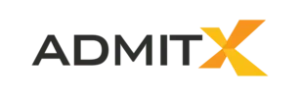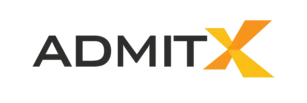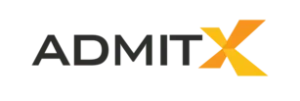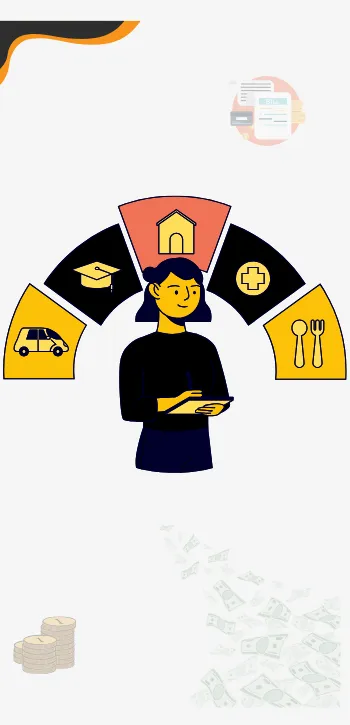- New Zealand offers 3 major study intakes: February, July, and November. February is the primary intake, with the widest range of programs and opportunities, followed by the smaller July and November intakes.
- February intake applications are due between August and November the previous year, July intake runs from February to April, and November intake applications are open from May to September.
- February intake offers maximum program availability and better scholarship access, July provides flexibility for mid-year graduates, and November is ideal for short-term or vocational courses with lower competition.
New Zealand is a rapidly growing study destination, known for its high-quality education system, safe environment, and work-friendly student visa policies. If you’re considering New Zealand for your higher education, it’s important to know that universities here offer 3 major intakes throughout the year, February, July, and November, with February being the primary one.
This blog outlines all the essential details about the study intakes in New Zealand, their advantages, timelines, top universities offering each intake, and guidance on choosing the best one for your goals.
Study Intakes in New Zealand
New Zealand follows a Southern Hemisphere academic calendar, which means its academic year begins early in the calendar year and runs through to the end of it. Universities and institutes of technology in New Zealand offer 3 main study intakes for international students
- February Intake
- July Intake
- November Intake
| Intake | Application Period | Commencement of Classes |
|---|---|---|
| February Intake | August-November (Previous Year) | Late February-Early March |
| July Intake | February-April (Same Year) | Mid-Late March |
| November Intake | May-September (Same Year) | Early-Mid November |
February Intake in New Zealand
The February intake is the primary and most significant academic intake in New Zealand. It aligns with the beginning of the academic year and offers the widest selection of programs, making it the most popular choice among both domestic and international students. Nearly all universities and institutes of technology open admissions for their flagship undergraduate, postgraduate, diploma, and doctoral programs during this term.
This intake is perfect for those who want to pursue a degree in engineering, business, healthcare, IT, or social sciences; the February intake provides the broadest opportunities for enrollment, scholarships, and support services.
Benefits of February Intake in New Zealand
Choosing the February intake in New Zealand universities offers several strategic advantages for international students. As the primary admission cycle, it sets the stage for a well-rounded academic and student life experience. Here are some of the key benefits.
Maximum Program Availability: The February intake features the widest selection of academic programs at all levels, undergraduate, postgraduate, diploma, and doctoral. This includes competitive and research-oriented courses that are often not available in later intakes.
Greater Access to Scholarships and Financial Aid: Most New Zealand universities allocate their major scholarship and funding packages for the February intake. Applying during this cycle increases your chances of securing merit-based scholarships, tuition waivers, and government or university-sponsored financial support.
Better Alignment with Internships and Job Cycles: Academic progression from the February intake aligns perfectly with mid-year internships, graduate programs, and on-campus job opportunities. Students starting in this term are well-positioned to gain work experience during or after their studies.
Enhanced Access to Accommodation and Campus Services: Since February marks the start of the academic calendar, on-campus housing options and student support services are at full capacity. You’re more likely to get preferred housing choices, access to academic advisors, and support for international students.
Timelines for the February Intake in New Zealand
Below, we have provided a brief timeline for the February intake in New Zealand. However, deadlines may vary by university. It’s highly recommended to start preparations at least 8–10 months in advance to allow ample time for applications, documentation, and visa processing.
| Steps | Ideal Timeframes |
|---|---|
| Research & Shortlist Universities | May – July 2025 |
| Prepare for English Proficiency Tests (IELTS/TOEFL/PTE) | June–August 2025 |
| Gather Academic Documents & SOPs | June–August 2025 |
| Begin University Applications | August 2025 |
| Submit Applications | August 2025 |
| Receive Offer Letters & Accept Admission | October–December 2025 |
| Apply for a Student Visa | November 2025–January 2026 |
| Book Flights & Arrange Accommodation | December 2025–January 2026 |
| Fly to New Zealand | Mid to Late February 2026 |
Top Universities Offering Admission for February Intake in New Zealand
The majority of New Zealand’s top-ranking universities open a full suite of programs for the February intake. These universities offer a wide range of programs and are known for strong academic reputations, research opportunities, and industry-aligned curricula. Some of the key institutions include
- University of Auckland
- University of Otago
- Victoria University of Wellington
- University of Canterbury
- Massey University
- Auckland University of Technology (AUT)
- Lincoln University
Popular Courses Available in February Intake
The February intake is ideal for students aiming to enter high-demand fields and benefit from the full academic cycle. Some of the most popular disciplines include
- Business Administration & Management
- Information Technology & Computer Science
- Engineering (Civil, Mechanical, Electrical, Software)
- Healthcare & Nursing
- Environmental Science
- Data Science & Analytics
- Tourism & Hospitality
- Architecture & Design
- Media & Communication
- Agriculture & Horticulture
July Intake in New Zealand
The July intake is the second major academic intake in New Zealand and serves as a valuable alternative for students who may have missed the February deadline. While it does not offer as broad a range of programs as the primary intake, it still includes a diverse selection of undergraduate and postgraduate courses, particularly in high-demand fields such as business, information technology, health sciences, agriculture, and engineering.
Benefits of the July Intake in New Zealand
The July intake offers a flexible and strategic opportunity for international students who may need more time for preparation or who are graduating mid-year. Although slightly smaller in scale than the February intake, it still provides solid academic and professional advantages.
Mid-Year Start Flexibility: The July intake is ideal for students who finish their academic year around May or June in their home country. It allows a seamless transition into higher education without having to wait until the next calendar year.
Decent Course Availability: A wide range of popular programs, especially in fields such as business, IT, healthcare, engineering, and social sciences, are still available during this intake across many universities and institutes.
Less Admission Competition: Compared to the February intake, the July session typically sees fewer applicants, which may result in higher acceptance rates for certain courses and improved access to academic support services.
Access to Internships & Part-Time Jobs: Students enrolling in July can still take advantage of year-end internship and part-time job opportunities, especially if they plan their academic progression strategically.
Timelines for the February Intake in New Zealand
Below, we have provided a brief timeline for the July intake in New Zealand. However, deadlines may vary by university.
| Steps | Ideal Timeframes |
|---|---|
| Research & Shortlist Universities | October – December 2024 |
| Prepare for English Proficiency Tests (IELTS/TOEFL/PTE) | November 2024 – January 2025 |
| Gather Academic Documents & SOPs | December 2024 – January 2025 |
| Begin University Applications | February 2025 |
| Submit Applications | February – April 2025 |
| Receive Offer Letters & Accept Admission | March – May 2025 |
| Apply for a Student Visa | April – June 2025 |
| Book Flights & Arrange Accommodation | May – June 2025 |
| Fly to New Zealand | Late June – Early July 2025 |
Top Universities Offering Admission for July Intake in New Zealand
While the February intake is when most universities offer the full range of programs, the July intake still sees strong participation from New Zealand’s leading institutions.
- University of Waikato
- Massey University
- Lincoln University
- Victoria University of Wellington
- Eastern Institute of Technology (EIT)
- Ara Institute of Canterbury
- Otago Polytechnic
- Toi Ohomai Institute of Technology
- Unitec Institute of Technology
Popular Courses Available in the July Intake
- Business & Management
- Information Technology (IT) & Computer Science
- Engineering (Civil, Mechanical, Electrical, Software)
- Health Sciences & Nursing
- Hospitality & Tourism Management
- Agriculture & Environmental Science
- Accounting & Finance
- Social Work & Community Development

November Intake in New Zealand
The November intake is the least common and smallest academic intake in New Zealand. It is generally offered by a select number of institutes and polytechnics rather than major universities and is primarily targeted at students interested in short-term programs, vocational training, diploma courses, and bridging or foundation programs.
While not as comprehensive as the February or July intakes, the November intake offers a valuable alternative for students looking to get started with their studies without waiting for the next major cycle. It is also ideal for those seeking to build a pathway into full-time academic programs beginning in the following academic year.
Benefits of November Intake in New Zealand
Here are some of the key benefits of the November intake in New Zealand.
Ideal for Short-Term and Career-Oriented Programs: Many certificate, diploma, and vocational training programs are offered during this intake, making it perfect for students looking to gain practical skills and job-ready qualifications quickly.
Quicker Entry into the Education System: The November intake allows students to begin their studies without waiting for the next year’s February intake, which can save valuable time, especially for those who missed earlier deadlines.
Lower Competition: Fewer students apply during this intake, leading to less competition for seats in available programs. This can increase your chances of admission, especially in select institutes.
Pathway to Degree Programs: Many programs starting in November serve as bridging or foundation courses that can lead into full degree programs beginning the following February or July. It’s a smart choice for students who want to strengthen their academic foundation.
Timelines for the November Intake in New Zealand
Below, we have provided a brief timeline for the November intake in New Zealand. However, deadlines may vary by university.
| Steps | Ideal Timeframes |
|---|---|
| Research & Shortlist Universities | April–June 2025 |
| Prepare for English Proficiency Tests (IELTS/TOEFL/PTE) | May–June 2025 |
| Gather Academic Documents & SOPs | May–July 2025 |
| Begin University Applications | June 2025 |
| Submit Applications | June-August 2025 |
| Receive Offer Letters & Accept Admission | July–September 2025 |
| Apply for a Student Visa | August–October 2025 |
| Book Flights & Arrange Accommodation | September–October 2025 |
| Fly to New Zealand | Late October–Early November 2025 |
Universities and Institutes Offering November Intake in New Zealand
The November intake is primarily supported by polytechnic institutes and technical education providers, as most major universities focus on February and July intakes. These institutions are well-known for their career-focused, hands-on programs in fields such as business, trades, IT, hospitality, and health sciences.
Here’s a list of institutions that commonly offer November intake.
- Toi Ohomai Institute of Technology
- Ara Institute of Canterbury
- Otago Polytechnic
- Unitec Institute of Technology
- Eastern Institute of Technology (EIT)
- Weltec & Whitireia New Zealand
- Southern Institute of Technology (SIT)
- Manukau Institute of Technology (MIT)
Popular Courses Available in November Intake
The November intake in New Zealand is primarily geared toward vocational, certificate, diploma, and foundation-level programs, making it ideal for students who wish to pursue career-oriented education or pathway courses that lead to full degrees.
Below are some of the most commonly available and in-demand programs during this intake
- Certificate and Diploma in Business Administration
- Certificate in Information Technology
- Diploma in Hospitality Management
- Certificate in Health and Wellbeing
- Foundation Programs (for undergraduate entry)
- English Language Preparation Courses (IELTS/Academic English)
- Diploma in Engineering Technology
- Trade Qualifications (Construction, Plumbing, Electrical, etc.)
- Early Childhood Education Certificates
- Healthcare Assistant Training Programs
Key Takeaways by AdmitX
New Zealand offers 3 main intakes for international students. The primary intake, Semester 1, starts in February or March, with application deadlines closing in December or January. The Semester 2 intake begins in July, with applications generally due in May or June.
Additionally, some universities offer a Summer Intake in November or December, especially for short-term courses, English language programs, or specialised certifications. While Semesters 1 and 2 are the most common, the Summer Intake provides flexibility for students seeking alternative start dates. Each intake has its own specific application timeline, so it’s essential for students to research and prepare accordingly.
FAQs
What are the main study intakes in New Zealand?
New Zealand has 3 main intakes: Semester 1 (February/March), Semester 2 (July), and a less common Summer Intake (November/December). Semester 1 is the primary intake, with most courses starting in late February or early March.
Semester 2 is a secondary intake, typically starting in July. Some universities offer a Summer Intake for specific programs or short courses, which usually begins around November or December.
When should I apply for the February intake?
For the February/March intake (Semester 1), it’s recommended that you apply by December or January at the latest. This allows ample time for processing visas, accommodation, and any required documents such as English language test results.
While some universities may have slightly different deadlines, starting the application process early will help avoid last-minute issues and ensure a smoother transition to study.
Can I apply for a July intake if I miss the February intake?
Yes, Semester 2 (July) is a good option if you miss the February intake. Many programs, especially postgraduate courses, offer this intake. However, not all programs may be available, so it’s important to confirm with your university whether your desired course is offered in July.
Application deadlines for Semester 2 typically fall in May or June, giving you enough time to gather your documents and prepare for the start of the semester.
What is the Summer Intake, and who is it for?
The Summer Intake (November/December) is offered by some universities, mainly for short courses, English language programs, or research opportunities. It’s less common than the main intakes but can be a good option for students looking for specialized, shorter-term study opportunities.
If you’re interested in quick certifications or language training, the Summer Intake might suit you. Make sure to check if your program is available during this period.
How does the student visa application process work in New Zealand?
To study in New Zealand, you’ll need a student visa, which you can apply for after receiving an offer of admission. The process involves submitting documents such as proof of acceptance, proof of funds, a valid passport, and health insurance.
It’s advisable to apply for the visa at least 2-3 months before your intended start date to allow sufficient time for processing. Once your visa is approved, you can travel to New Zealand and begin your studies, with the added benefit of being able to work part-time during your studies.
















